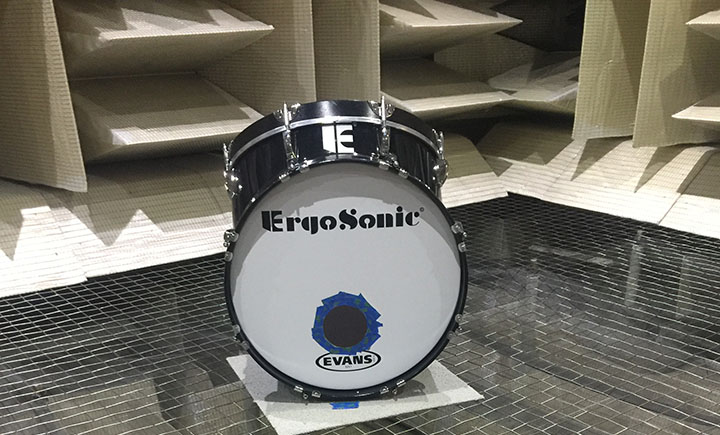Researching the beat of a different drum
How a partnership with Binghamton University’s mechanical engineering department helped a small business improve its unique line of drums.

For small businesses in New York, keeping up with advances in technology and the demands of industry research can be difficult. That’s why the engineering schools at Binghamton University, University at Buffalo and Stony Brook University created the Strategic Partnership for Industrial Resurgence (SPIR). SPIR was established to strengthen New York State’s small and mid-sized businesses by helping them apply technology solutions to make them more competitive.
One such small business is ErgoSonic Percussion based out of Apalachin, N.Y. President Ken Turner applied for the SPIR program with a plan to test ErgoSonic’s unique line of drums. “All ErgoSonic instruments are made with an angled wooden maple shell that deflects sound waves differently than conventionally designed cylindrical drums,” Turner said. In particular, ErgoSonic has redesigned the traditional marching bass drum, which is still a large and cumbersome relic of the days of John Philip Sousa. “Our marching bass drum consists of two shell segments connected together at an angle of 35 degrees, while our drum set rack and floor toms are at angles of 15 and 90 degrees, respectively.”
While Turner and his team can tell there’s an improvement in the sound quality of ErgoSonic drums compared to the conventional drums based on their own musician ears, they wanted concrete data to explain that difference in sound quality.
That’s where the SPIR program helped. The program connected Turner with Binghamton University Distinguished Professor of Mechanical Engineering Ron Miles, PhD candidate Mahdi Farahikia and undergraduate student Ari Massias. Together, they were able to use the anechoic chamber — a room on campus where the walls are built to absorb sound and keep out any background noise – to accurately test the sound quality of the drums.
“We were able to compare the length of decay of the drums as well as test the affect that porting the resonant head on our drums had on pitch and note length,” Turner said. “We also tested the affect that covering the resonant head port with various materials had on tone quality and decay length.”
The results from the study have already allowed ErgoSonic to start perfecting its designs. “We have plans to develop a prototype of several different resonant head port covers that would allow us to control the exact length of the note, which is impossible on conventional instruments,” Turner said. “We also have a design that will make our marching drums easier to carry, by providing a new method of hooking the drum onto the carrier/harness the drummer wears to march with the drum on.”
For a small company like ErgoSonic Percussion, being able to conduct research with Binghamton University’s Mechanical Engineering Department has been invaluable. Turner had originally looked for similar research on conventional drums to compare his drums to, but turned up empty handed. This type of research gives Turner and his team a chance to scientifically confirm what their musician ears already knew. It certainly will have a lasting effect on ErgoSonic Percussion.

